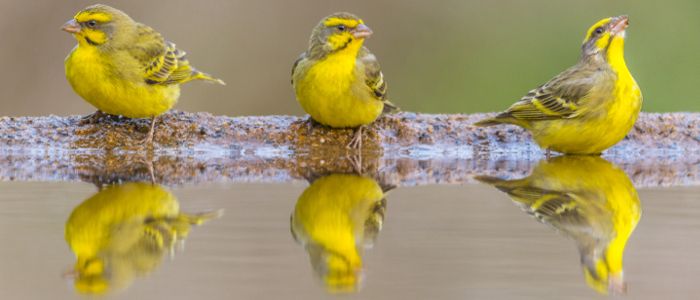So You Think You Know the Canary Islands?

Cruising in the Canaries is hugely popular among holidaymakers for a number of reasons. The islands offer some stunning scenery, delicious food, relaxing beaches, and a whole world of interesting anecdotes, traditions, and snippets from history! While many Brits have been to at least one of the islands, there are so many things that remain unknown to its visitors. You may think yourself an expert on the Canary Islands, but did you know these ten interesting facts?

1. The word ‘Canaries’ has derived from the Latin word, ‘Canaria’, meaning dog. It’s thought that the name was attributed because early European settlers found wild dogs on the island, or Roman explorers chose it because of the nearby seals - which they called sea dogs.
2. The most popular sport in this part of the world is known as Lucha Canaria – a form of traditional wresting. Dating back to the 15th century, Canarian wrestling can still be seen in full swing in many venues across the islands.
3. While the small, yellow Canary birds are native to the islands, many people don’t realise that it is they who are named after the land, rather than the other way around.

4. The total population of all the Canary Islands is just over 2 million, but this popular holiday destination generally sees more than 12 million tourists every year!
5. Admiral Lord Nelson is most famous for his military action against the French, but it was actually in the Canaries that he lost his right arm – at the Battle of Santa Cruz de Tenerife in 1797.
6. At the time of writing, La Palma is home to the world’s largest working telescope. It’s situated at the Roque de los Muchachos Observatory, and has a mirror of just over 34 feet (10.4 metres) in diameter.

7. Various parts of Spain – including Tenerife, La Palma, and Gran Canaria – maintain the ‘Burial of the Sardine’, or ‘Entierro de la sardina’, tradition to end carnival events. This ceremony dates back many centuries, and involves a symbolic portrayal of burning or burying a fish.
8. The aboriginal inhabitants of the Canary Islands are known as Guanches, who hailed from the North African Berber people. It’s thought that they migrated to the islands in around the year 1000 BC.
9. The Canary Islands were a common stop on journeys between the Americas and Europe. This means that there are culinary influences here from all over the world, and produce such as potatoes, beans, and avocados were all introduced from South America.

10. The ancient whistling language of La Gomera – known as Silbo Gomera – is still used and even taught in schools here today. It was originally created to help communicate across the hilly terrain.
There is much more to the Canary Islands than first meets the eye, but take the time to explore it, and get to know some of the locals, and you will find a land of intrigue and rich history. Take a look at our range of cruises to the Canary Islands and discover more on your next holiday.